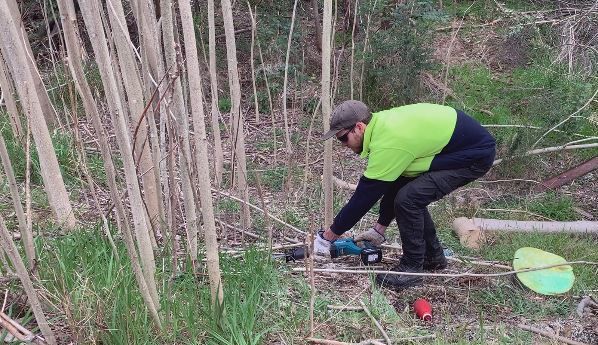Since receiving the news that our Bonegilla Bat Biodiversity project was approved for funding, Parklands Rangers have wasted no time in getting down to the river and making a start on improvement works.
The new project will secure habitat for the Grey-headed Flying-fox, the largest of the flying-fox family, listed as vulnerable in Victoria. These amazing bats fly up to 50km in one night seeking fruits, nectar and pollen to eat, and providing a unique night-pollination service to many species of Eucalypts.
This Landcare Led Bushfire Recovery project is supported by the Australian Government’s Bushfire Recovery Program for Wildlife and their Habitat. The funds assist Parklands to employ local Field Rangers, create landscape scale wildlife corridors, and provide opportunities for local community members to participate in the protection of wildlife through our River Stewardship program.
Works focus on the fencing of priority habitat corridors to exclude livestock, which alter the native vegetation to the extent that it no longer provides for many native wildlife species. These corridors will be planted in winter 2022 with native plants providing sustenance for Grey-headed Flying-foxes.
Unfortunately, covid restrictions and now floods have meant the River Stewardship volunteer program has been put on hold. However, Parklands Rangers – dubbed the Landcare Led Recovery team – have already spent a week removing woody weeds along Flanagan’s Creek near what was the largest bat colony in this region. The main colony has recently moved from this noisy freeway site to the river opposite Gateway Island.
The project will provide plenty of opportunities for volunteers to participate over summer, including bat surveys by canoe to identify outlier colonies and also some bat surveys at sunset. Keep an eye on our River Stewardship sessions on our events listings and Facebook page for updates.
Top photo: Grey-headed Flying-fox, by Oystercatcher. CC BY-NC-SA 2.0







